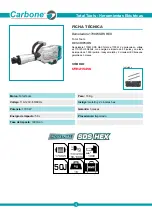
5.1
GENERAL
SECTION 5
MAINTENANCE
This section provides troubleshooting data, periodic. servicing, calibration and
performance testing procedures. The troubleshooting data should be used in con
junction with the schematic diagrams (Figures 6-1 and 6-4 through 6-ll)_and Sec
tion 4 which outlines the principles of operation. In addition, Figures 6-2 and
6-3 physically locate the components referred to in the text. Any questions per
taining to r:-epair should be directed to the nearest Sorensen representative* or to
the factory. Include the model and serial numbers in any correspondence.
Should it be necessary to return a unit to the factory for repair, prior authoriza
tion from Sorensen Company must be obtained.
5. 2
PERIODIC SERVICING
Whenever a unit is removed from service, it should be cleaned, using naphtha or
an equivalent solvent on painted surfaces, and a weak solution of soap and warm
water for the front panel.· Compressed air may be .used to blow dust from in and
around components.
5. 3
TROUBLESHOOTING
Table 5-1 provides a list of malfunction symptoms along with a tabulation of the
possible cause(s) for each symptom. ·Note that the failure of a single component
may result in a chain reaction effect. As additional aids to troubleshooting,
voltage checkpoints have been designated on the printed circuit schematic dia
gram, Figure 6-1. Figure 6-1 also shows typical waveforms developed across a
number of selected components.
5. 4
CALIBRATION
Following repair, the unit should be recalibrated to insure that replacement com
ponents have not altered performance. Refer to Table 5-3 for unit calibration
specifications. The following is . the calibration procedure to ensure that full
rated voltage output is available:
1.
Rotate all the COARSE and FINE CURRENT controls fully clockwise.
2.
Set the unit POWER switch to OFF and remove the link between termi
nals 5 and 6. Connect a precision (±1%) 12K resistor between termi
nals 4 and 5.
3.
Place a precision de voltmeter across the output sense leads.
4.
Set unit POWER switch to ON, and adjust R30 on the printed circuit
board (Figure 6-2) until the voltmeter indicates 105% of the full output
voltage rating of the supply.
5.
Set POWER switch to OFF. Disconnect the voltmeter and 12K resistor,
and r�place link between terminals 5 and 6.
Maintenance
5-1
Rev B (6/84)
















































